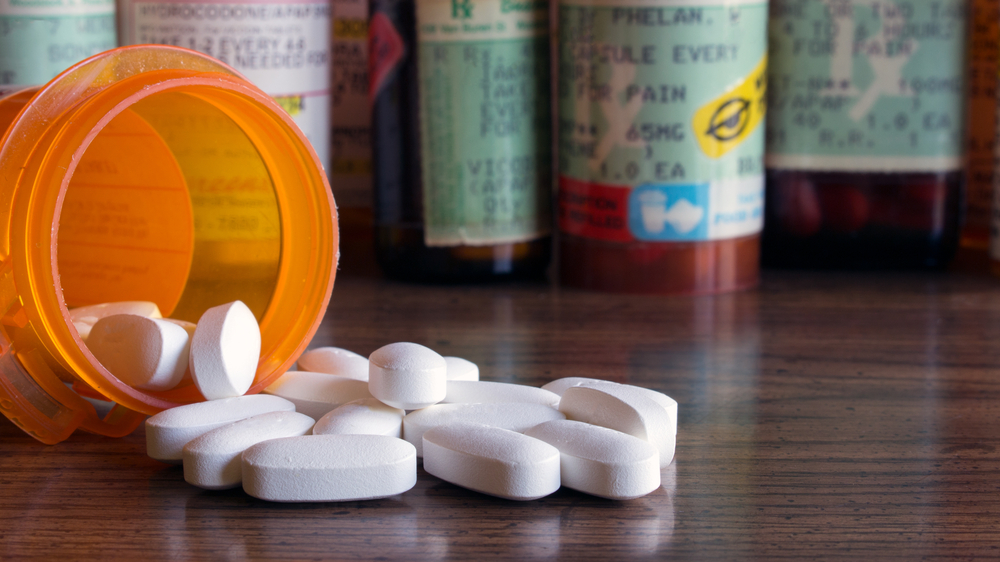More Than a Meal: How Nutritional Therapy Rebuilds the Body & Brain in Recovery
Nutrition is often the first thing that suffers when someone start abusing drugs or alcohol. According to research, more than 60% of people with drug dependence suffer from nutritional deficiencies. That’s mostly because drug abuse can lead to malnutrition and disturbances in nutrient absorption, as well as increased or decreased appetite. As such, treatment centers integrate nutritional therapy to help reverse the negative effects, and restore balance.
What Is Nutrition Counseling in Addiction Treatment?
Nutritional counseling in drug rehab is a structured, evidence-based approach to restoring health. It is part of a broader addiction treatment plan, often combined with therapy, medication, and support groups.
During this process, a registered dietitian evaluates your diet, medical history, and lab results. The goal is to repair the body, rebalance the brain, and support long-term physical health.
Medical nutritional therapy focuses on identifying deficiencies, rebuilding energy stores, and correcting damage caused by poor eating habits and substance abuse. It also helps manage health challenges that arise when the body is deprived of key nutrients.

The process is deeply individualized, as no two people have the exact same nutritional needs. For example, someone recovering from alcoholism may need high doses of B vitamins, while someone recovering from stimulant use may need amino acids to restore neurotransmitter balance.
Common Nutritional Deficiencies in Addiction
Substance use affects how the body absorbs, stores, and uses nutrients. Over time, this leads to serious health issues from nutritional deficiencies.
Common deficiencies include:
- Vitamins and minerals: Chronic alcohol and drug use depletes B-complex vitamins, vitamin C, vitamin D, magnesium, and zinc. These nutrients support the nervous system and energy metabolism.
- Amino acids: These are the building blocks of neurotransmitters like serotonin and dopamine. Low levels can cause depression, anxiety, and sleep disorders.
- Healthy fats: Essential fatty acids are vital for brain repair and hormone balance. Without them, the brain struggles to function properly.
- Complex carbohydrates: These stabilize blood sugar and sustain energy. Skipping them often leads to fatigue and irritability.
The Effects of Specific Drugs on Nutrition
Alcohol and drug use interfere with how the body absorbs and uses nutrients. As a result, one might end up experiencing weight loss, irritability, confusion, and frequent illness. Low nutrients also make withdrawal symptoms worse. That's where nutritional therapy can be a game-changer in early recovery from addiction.
Alcohol
Alcohol affects nearly every organ system. It irritates the digestive tract and reduces the body’s ability to absorb nutrients like thiamine (vitamin B1), folate, and vitamin B12. Deficiency in these nutrients can cause fatigue, nerve damage, and cognitive decline. Chronic alcohol use can also damage the liver, leading to impaired fat metabolism, low levels of amino acids, and reduced energy production.
Opioids (Heroin, Prescription Painkillers)
Opioid use often slows digestion, causing constipation and poor appetite. As a result, people may eat less or avoid nutrient-rich foods. This leads to deficiencies in vitamins, minerals, and complex carbohydrates, vital for maintaining stable blood sugar and mood balance. In early recovery, this lack of nourishment can worsen withdrawal symptoms, fatigue, and irritability.
Stimulants (Cocaine, Methamphetamine, ADHD Medications)
Stimulants suppress appetite, increase energy expenditure, and deplete nutrients rapidly. People who use stimulants often experience significant weight loss and muscle breakdown due to low protein and amino acid intake. These deficiencies affect neurotransmitter production, contributing to mental health conditions like anxiety, insomnia, and mood instability. Low magnesium and vitamin C levels are also common and can increase oxidative stress on the body.
Marijuana
While marijuana can increase appetite, frequent use may still alter metabolism and nutrient absorption. Long-term use can reduce motivation to prepare or eat balanced meals. Over time, this may lead to imbalances in essential vitamins and minerals, especially in people who replace nutritious meals with high-calorie, low-nutrient foods.

Benzodiazepines and Sedatives
Sedative medications can slow metabolism and cause fatigue, leading to reduced food intake. Chronic use may also impact liver function, limiting how the body processes and stores nutrients like vitamins A, D, and K.
Inhalants and Hallucinogens
Inhalants often contain toxic substances that can cause nervous system and liver problems as well as kidney disease. These substances interfere with the body’s ability to absorb and utilize nutrients efficiently. Hallucinogens, on the other hand, may alter appetite and perception of hunger, indirectly leading to irregular eating patterns and nutritional deficiencies.
Nutrition Therapy for Addiction Recovery
Nutrition counseling helps your body and mind recover together. It bridges the gap between physical healing and emotional stability. When your body receives the right nutrients, it becomes stronger, clearer, and more capable of supporting your recovery journey. Here’s how it helps:
1. Restores Nutrient Levels
During active addiction, the body loses essential vitamins, minerals, and amino acids that keep the systems running smoothly. Nutrition counseling identifies these deficiencies and helps replenish them through personalized meal planning. As your nutrient levels rise, you feel more energetic and less fatigued.
2. Supports Brain Chemistry
Substance use disrupts neurotransmitters that regulate mood, focus, and motivation. Amino acids play a key role in repairing nerve cells and restoring healthy neurotransmitter function. You may notice fewer mood swings, sharper thinking, and a greater sense of calm as balance returns.
3. Stabilizes Blood Sugar
Irregular eating habits can cause blood sugar to fluctuate, leading to irritability and cravings. Nutrition counseling emphasizes consistent meals with complex carbohydrates, protein, and healthy fats to steady your blood sugar. This helps you feel more focused and emotionally balanced throughout the day.
4. Reduces Withdrawal Symptoms
Good nutrition can make withdrawal easier to manage. Hydration, high-quality protein, and key vitamins and minerals help ease symptoms like anxiety, insomnia, and low energy. Many clients report fewer cravings and better sleep when their bodies are adequately nourished.
5. Improves Mental Health
The connection between nutrition and your mood is strong. When your brain receives the right nutrients, it can produce the hormones that support mental health and emotional stability. A healthy balanced diet also helps reduce symptoms of depression and anxiety while improving your ability to cope with stress.
6. Promotes Long-Term Physical Health
Years of substance use can take a toll on organs such as the liver and kidneys. Nutrition counseling helps protect and restore these systems. Medical nutrition therapy focuses on healing damage, reducing inflammation, and supporting your long-term physical health.

What a Nutrition Counseling Session Looks Like
A nutrition counseling session in addiction treatment is structured but supportive. It usually follows these steps:
1. Initial Evaluation
The process begins with a full assessment. The registered dietitian reviews your medical history, eating habits, and lab results. They look for nutrient deficiencies, weight loss, or digestive problems. They also review medications that may affect appetite or nutrient absorption.
2. Personalized Nutrition Plan
Once your needs are identified, the dietitian creates a plan. It includes protein-rich foods, amino acids, complex carbohydrates, vitamins, minerals, and healthy fats. The plan focuses on restoring balance to the nervous system and preventing relapse through steady energy and improved mood.
3. Nutrition Education
You learn what a healthy, balanced diet looks like. You discuss portion sizes, meal timing, and food combinations that keep blood sugar steady. You may also explore ways to reduce processed foods and replace them with nutrient-dense options.
4. Behavioral Support
Because nutrition and behavior are linked, sessions often address emotional eating or food avoidance. This is especially important for those who also struggle with an eating disorder. The goal is to develop a positive, consistent relationship with food.
5. Ongoing Monitoring
As your recovery progresses, the dietitian adjusts the plan. Blood tests and physical assessments track improvement. Over time, you will notice better sleep, energy, and concentration. Many clients describe feeling “clear-headed” for the first time in years.
Nutritional Therapy at More Than Rehab
At MTR, we understand that recovery is not just about stopping substance use. It’s about rebuilding your body and restoring balance to your mind. That’s why nutrition therapy is a core part of every addiction treatment plan we create for our clients.
Our registered dietitians and behavioral health specialists work together to identify nutritional deficiencies, design personalized meal plans, and guide you toward sustainable eating habits. Through medical nutrition therapy, we help your body recover from health issues caused by nutritional deficiencies, improve mood, and strengthen your nervous system for long-term physical health.
We offer nutrition therapy alongside other evidence-based treatments to help restore body function, stabilize blood sugar, and support overall mental health. Every step is designed to help you feel stronger, clearer, and more in control of your recovery.
If you are ready to rebuild your body and mind from the inside out, reach out to MTR today. Our team is here to help you create a healthier foundation for lasting recovery.


























